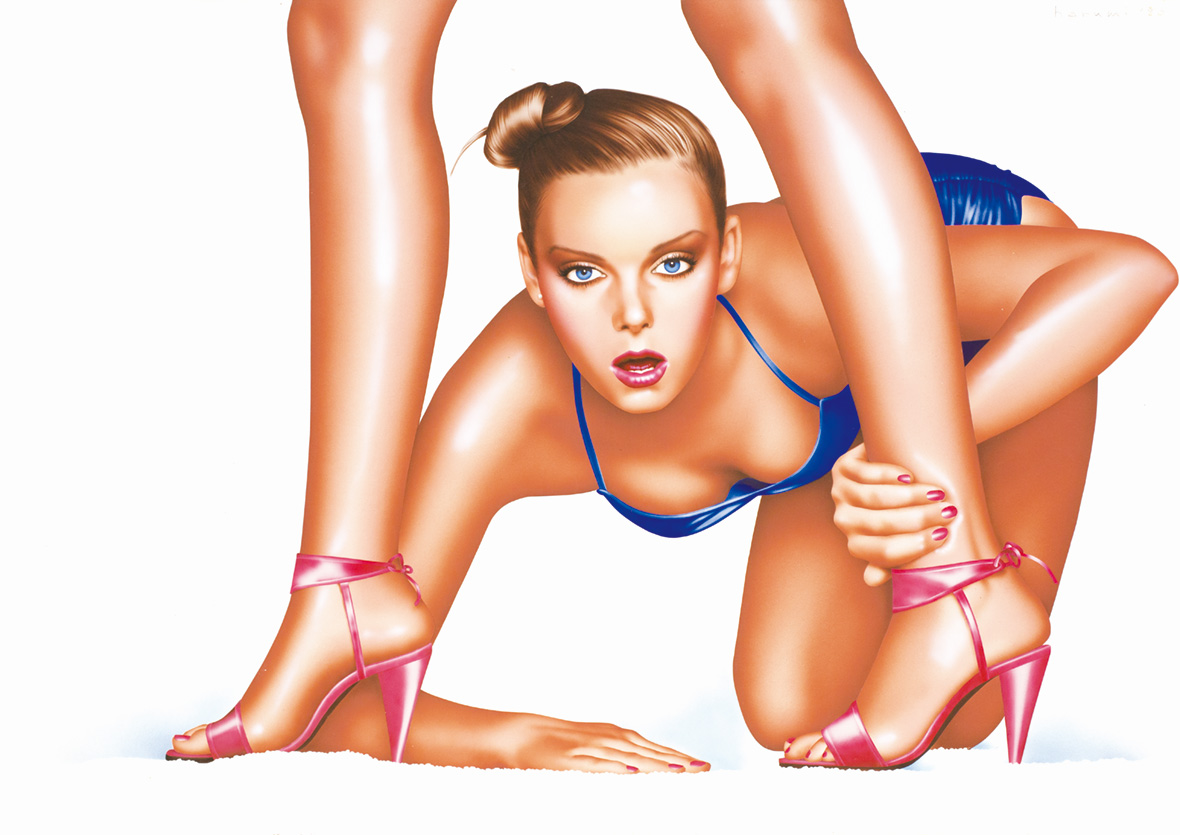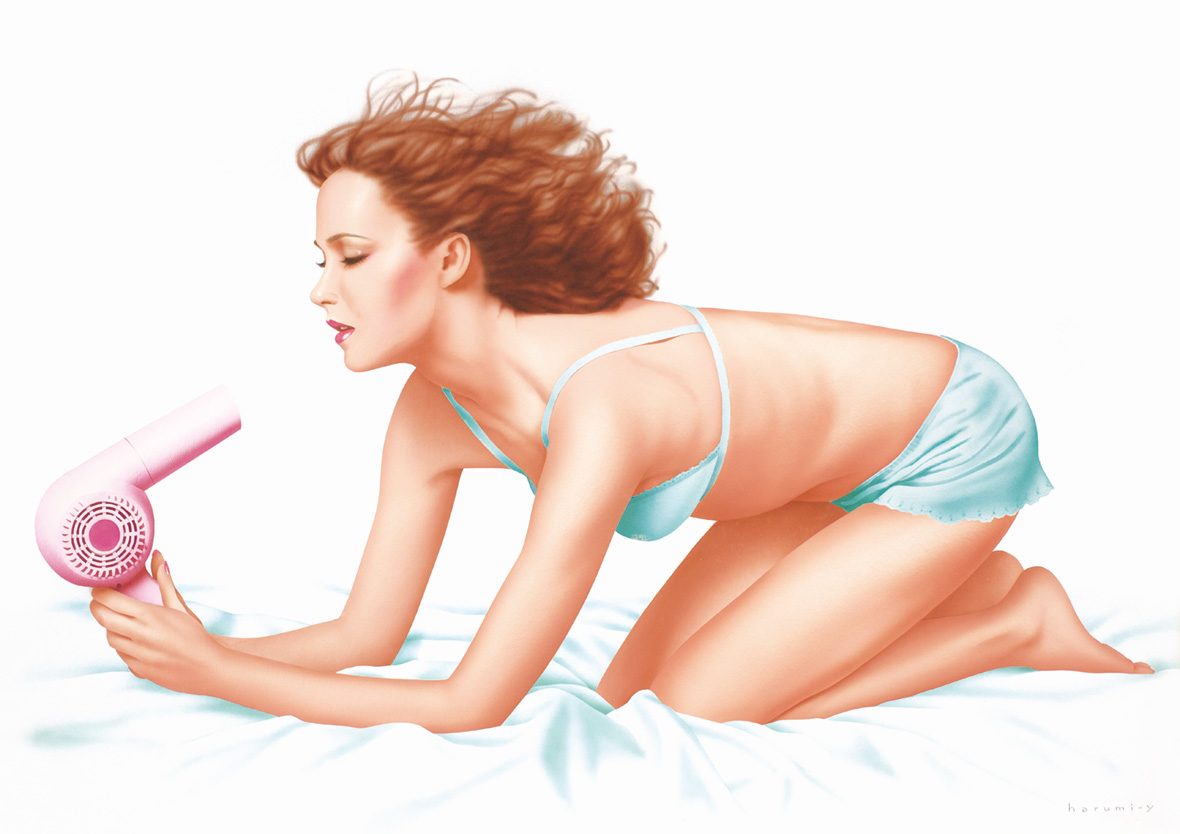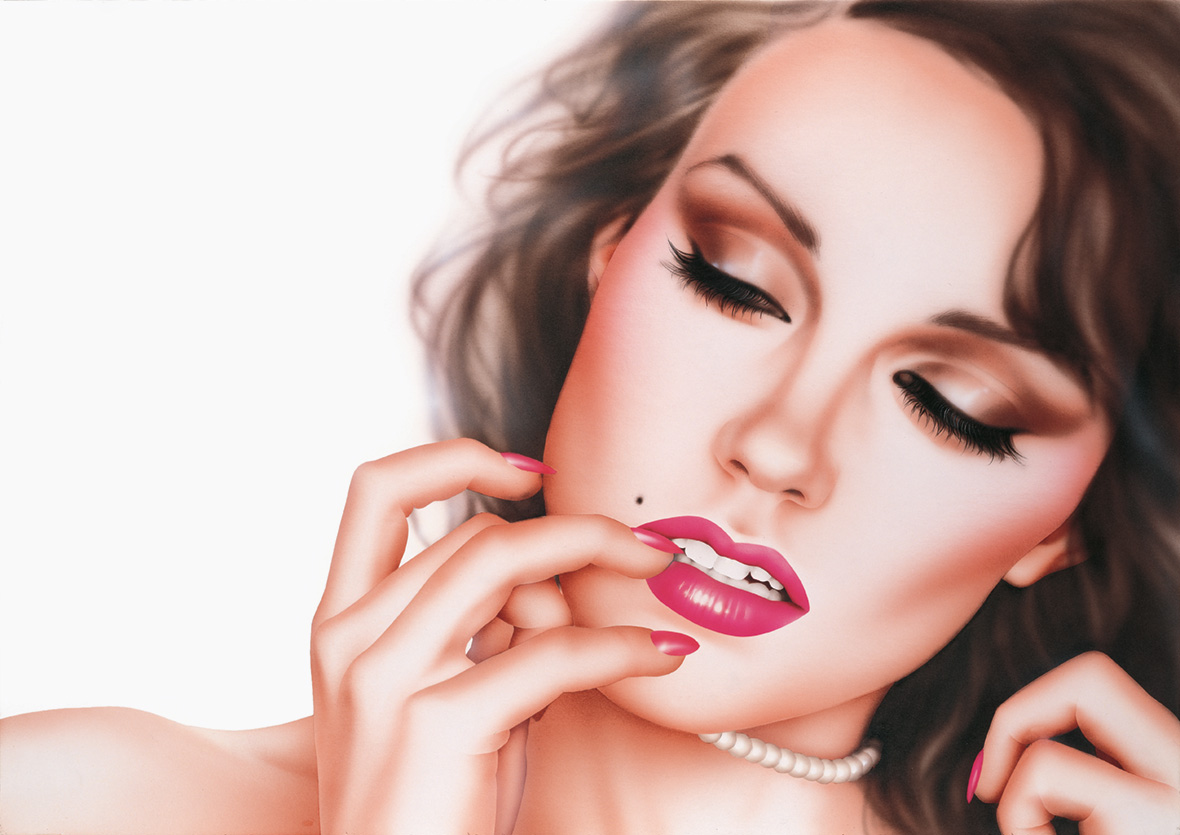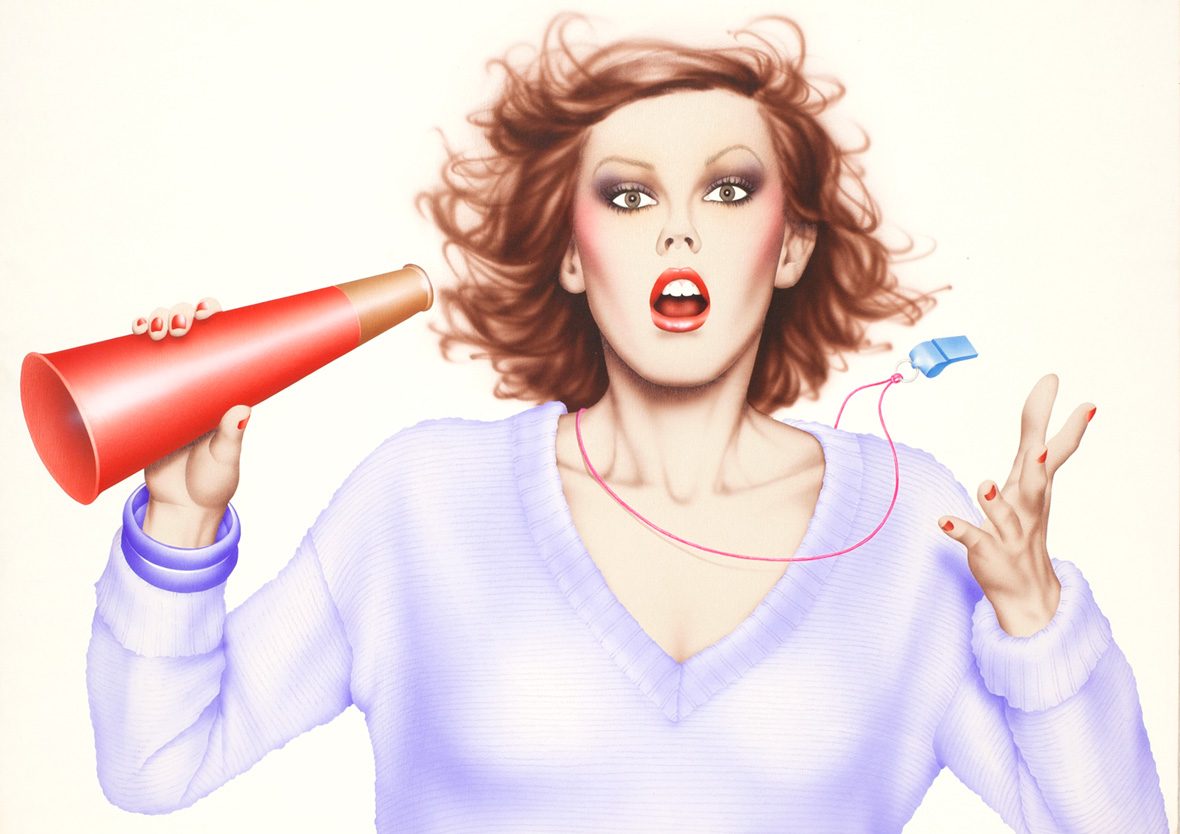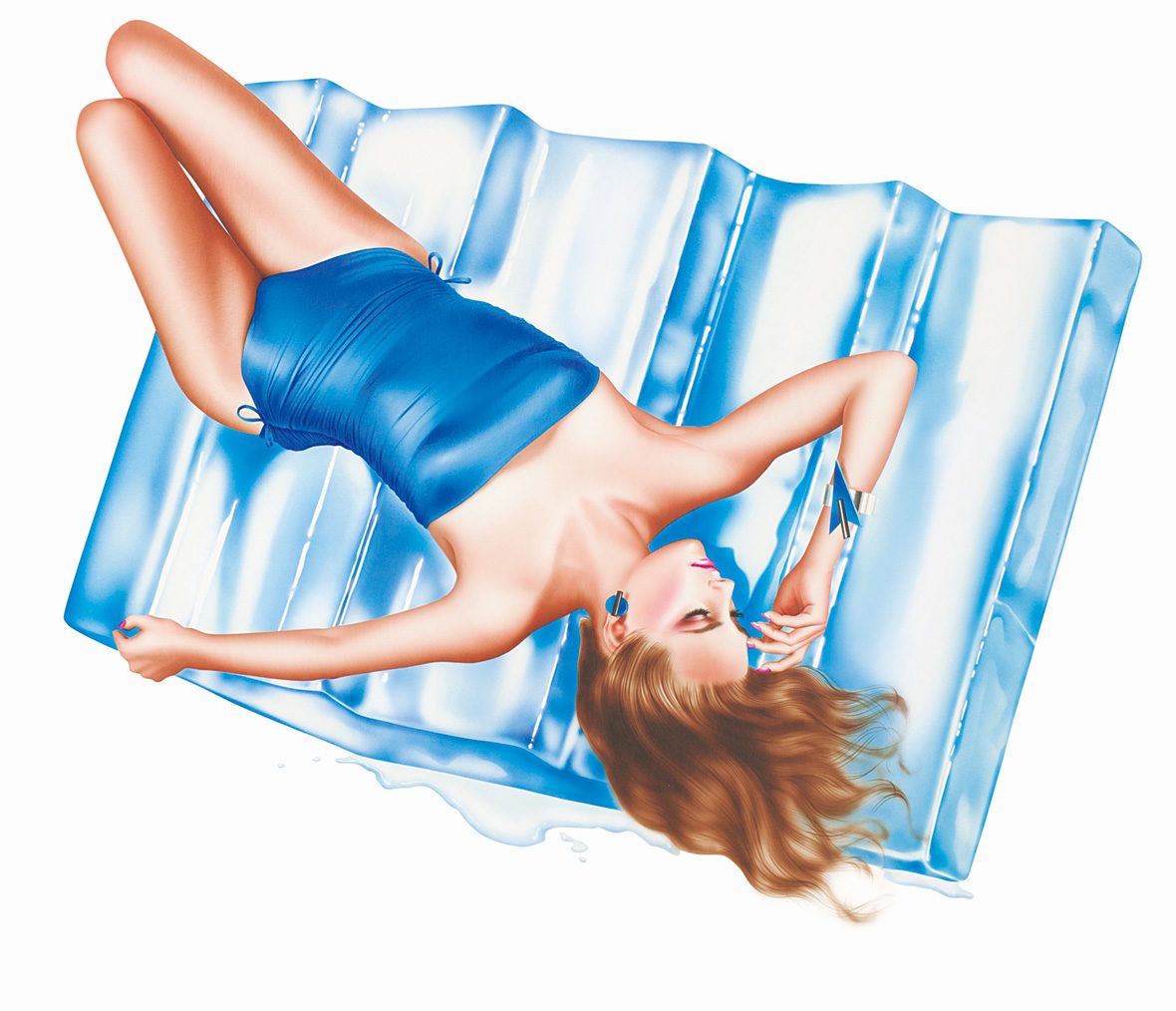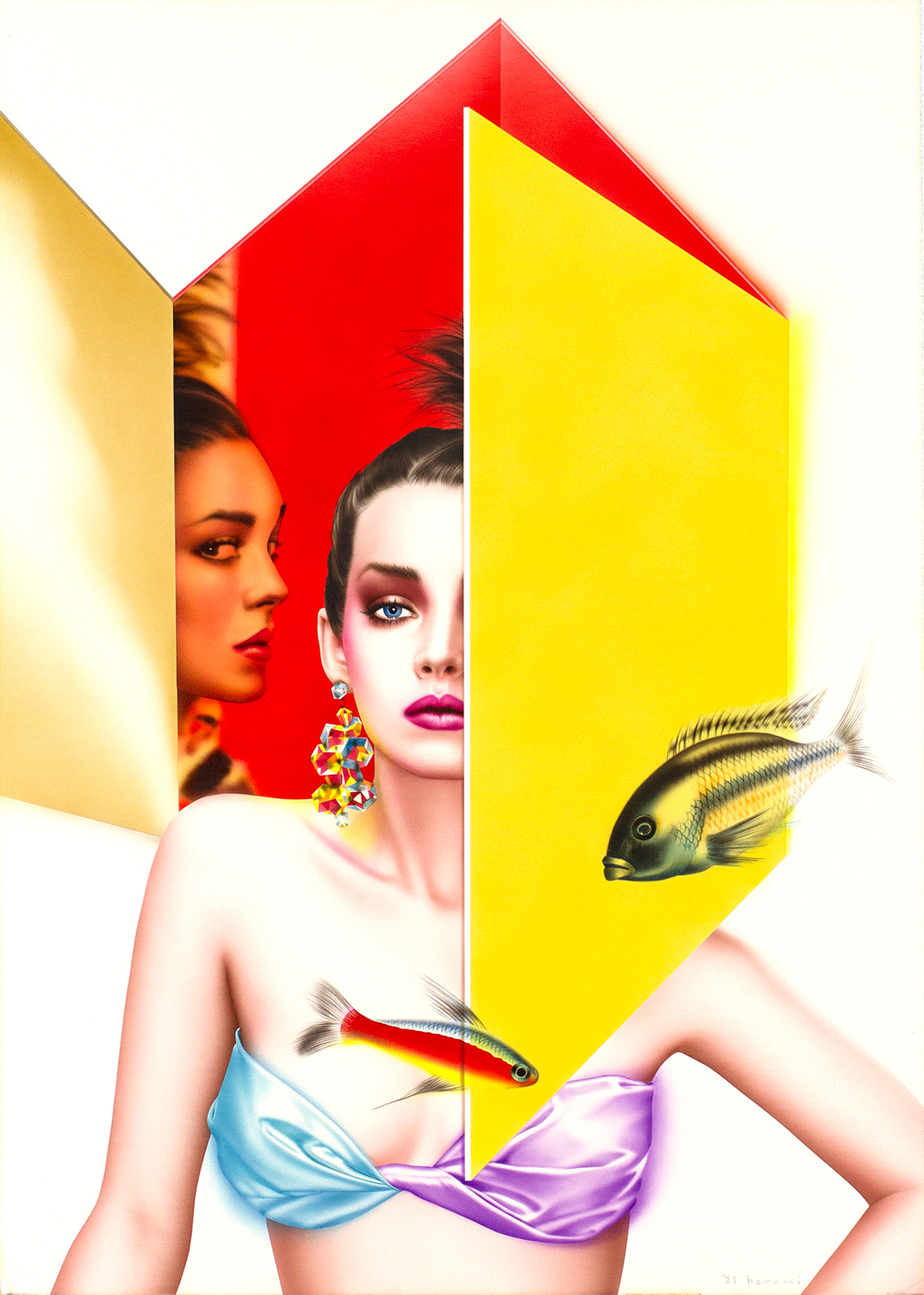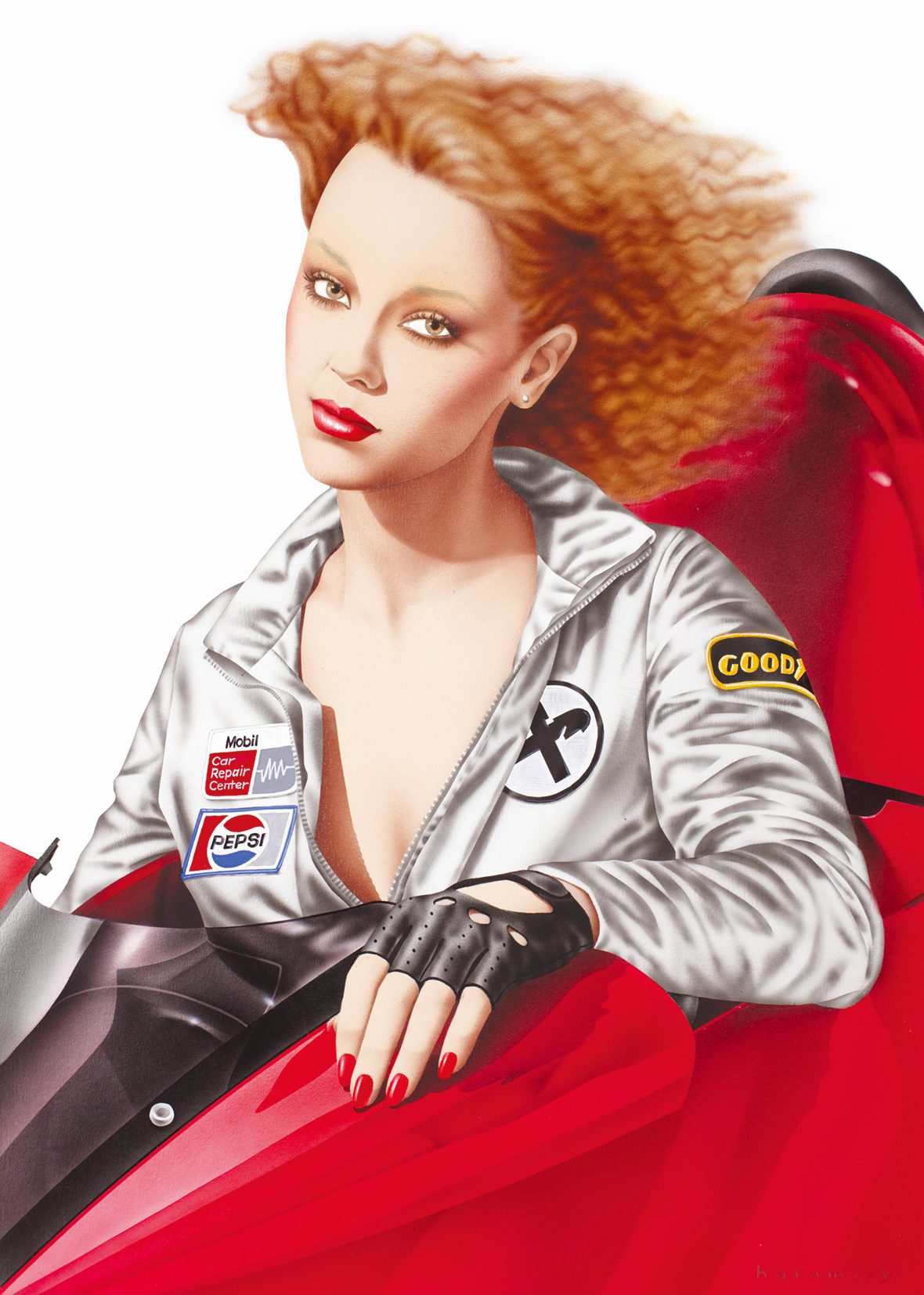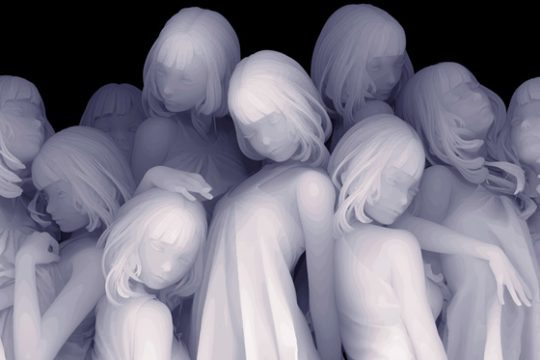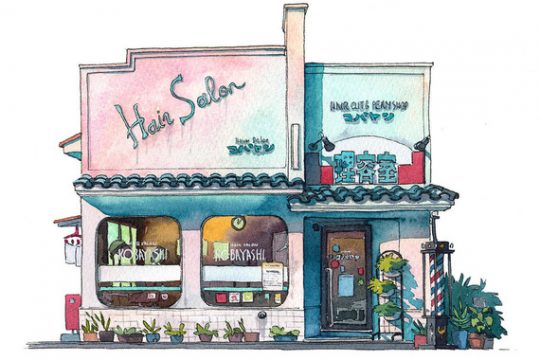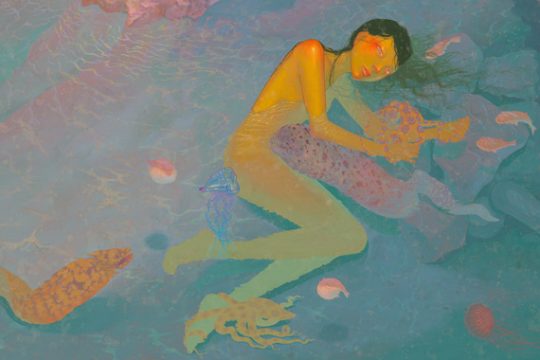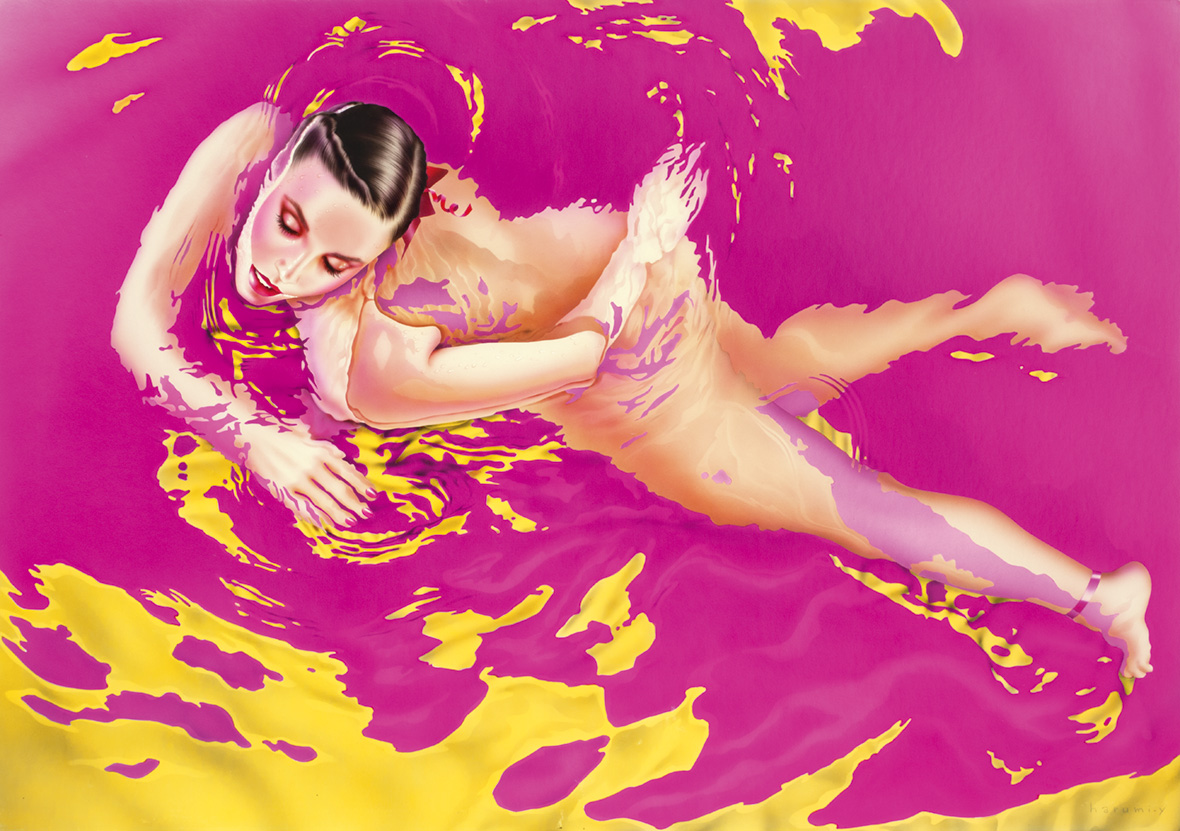
The 1970s in Japan started with a women’s liberation movement that aimed to overturn the repressed role females had in society. Before then, a male perspective had long defined femininity and how women should dress, act, and think. At the forefront of the transformative wave were the Harumi Gals, who bore new ideas that opposed how women were expected to behave in a man-dominated society.
These girls, however, are not of flesh and blood. They’re airbrush paintings by Harumi Yamaguchi, originally conceived as part of an ad campaign for PARCO, an iconic Japanese department store, of which she led alongside a small group of other women. The retail chain was the epitome of fashion and youth culture during the 1970s, 1980s, and 1990s in Japan.
20 世纪 70 年代,日本女性解放运动兴起,旨在推翻女性在社会中长期受压抑的地位。一直以来,人们从男性视角来定义女性气质,以此约束女性的着装、举止和思想。而 Harumi Gals 正是站在这次变革浪潮最前沿的先驱,她们带来全新的思想,反对以男性主导的社会对女性的约束。
但这些女孩却非血肉之躯,而是由山口晴美(Harumi Yamaguchi)创作的一系列喷枪画。这些角色最初是她和其他女性艺术家一起为日本著名百货公司 PARCO 创作的广告。在 20 世纪 70、80 和 90 年代,PARCO 百货是日本时尚和青年文化的象征。
Yamaguchi’s work contributed to turning PARCO into a social phenomenon. With smooth and curvy bodies, expressive eyes, and fleshy lips, her girls convey a bold sensuality, not aiming to seduce, but one that comes from within, born from the pure joy of being a woman. They also appear alone or among other women—not a man in sight. They live in a woman’s world.
“What Parco looked for in clients was an ‘independent woman.’ Someone who’s not just following a fad, but a person with their own opinions. I was always aware of this whenever I was painting a woman,” Yamaguchi says.
山口晴美的作品让 PARCO 百货掀起了一场社会运动。她所创造的女性形象身材曼妙、眼神生动、双唇丰满,散发着大胆的性感魅力;但这种性感并不是为了诱惑,而是来自她们内心作为女性那种纯粹的骄傲和喜悦。这些女性形象要么单独出现,要么和其他女性一起,总之不会出现男性的身影,仿佛她们生活在一个只有女性的世界里。
“PARCO 百货的目标客户是独立的女性,有主见、绝不随波逐流的女性。我在画每一个女性形象的时候,总是会特别注意这一点。”山口晴美
说道。
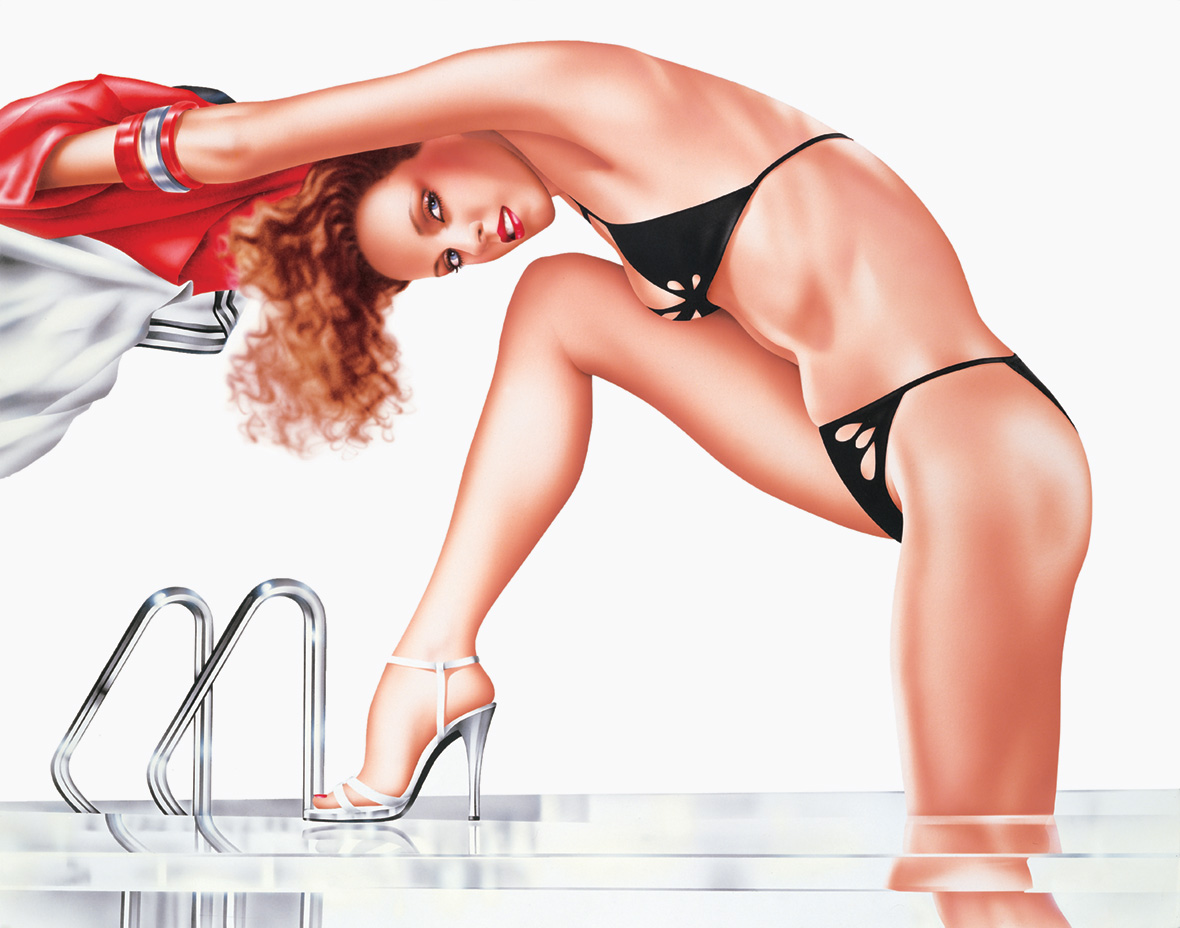
The garments her women wore represent the trends in 1970s and 1980s Japan. The style was often outdoorsy and sporty, with garments made of new synthetic fabrics and in bold colors, mirroring the style of icons like Jennifer Beals, in the classic Flashdance, or Jane Fonda in her workout VHS series. Short bikinis and lingerie are common recurrences. These women have a healthy and playful relationship with their bodies, not shy in baring skin. On their faces, intense blush, eyeshadow, eyeliner, mascara, and contrasting lipstick work in tandem to emphasize their fierce expressions.
They don’t pretend that they’re not symbols of female consumerism; the commercial side of the works is evident. Still, instead of products, it’s a lifestyle they’re selling. “I produced advertisements from the perspective of inviting a wide range of new women to live as ‘healthy and independent women,” Yamaguchi says.
她笔下的女性打扮时髦,演绎着 20 世纪 70、80 年代的日本时尚趋势。她们的造型大多数为户外运动风:创新的化纤面料、大胆的色彩,颇似电影《闪舞》(Flashdance)里的詹妮弗·比尔斯(Jennifer Beals),或是简·方达(Jane Fonda)在运动课程 VHS 录影带中的造型,短款比基尼和贴身内衣也是常见的造型。这些女性自信地展现自己的身体,丝毫不会感到羞涩。她们抹上浓浓的腮红、眼影,画上眼线、睫毛膏,涂上鲜艳夺目的口红,彰显自己无所畏惧的个性态度。
但同时,她们从不掩饰自己作为女性消费的符号;这些作品的商业意图总是显而易见。尽管如此,这些广告推销的不只是产品,更是一种生活方式。“创作这些广告时,我的想法是号召更多女性成为更健康和更独立的女性。”山口晴美说道。
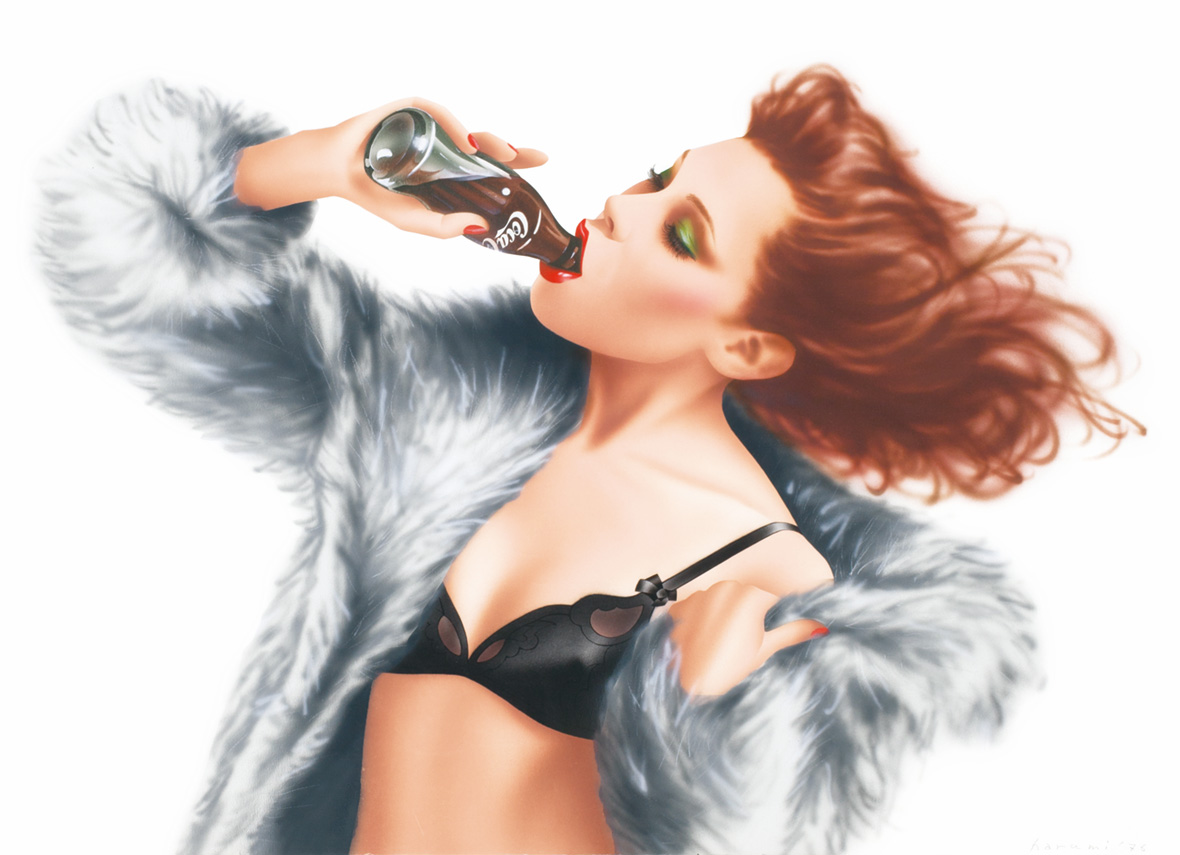
An unmistakable feature of her girls, even though created in Japan, is that they look nothing like Japanese women. Yamaguchi reveals that she always strived for universality. “I paint figures of unknown nationality because I think people around the world will receive it with more universality than if I painted specifically Japanese faces,” she says.
They might not have a defined nationality, but most of them are Western-looking. Perhaps it’s an attempt to liberate them from the expected qualities of a Japanese woman: modesty, politeness, and compliancy. Likely, It was also to distinguish from Kawaii, or the ‘cute’ culture, that also gained popularity in Japan in the 1970s.
虽然她笔下的女性形象是面向日本消费者而创作的,但五官看起来却不像日本女性。山口解释这是因为她一直努力让作品拥有更广泛的普遍性。“我创作时不会给人物角色设定特定的国籍,因为我觉得比起画充满日本特色的面孔,这样模糊国籍的形象更易获得世界各地观众的共鸣。”她解释道。
虽然没有明确的国籍,但这些女性形象大多都是西方面孔。这或许是为了鼓励日本女性挣脱社会对她们的预期:谦虚、礼貌、守规矩;也可能是为了摆脱日本在 20 世纪 70 年代盛行的“卡哇伊”文化。
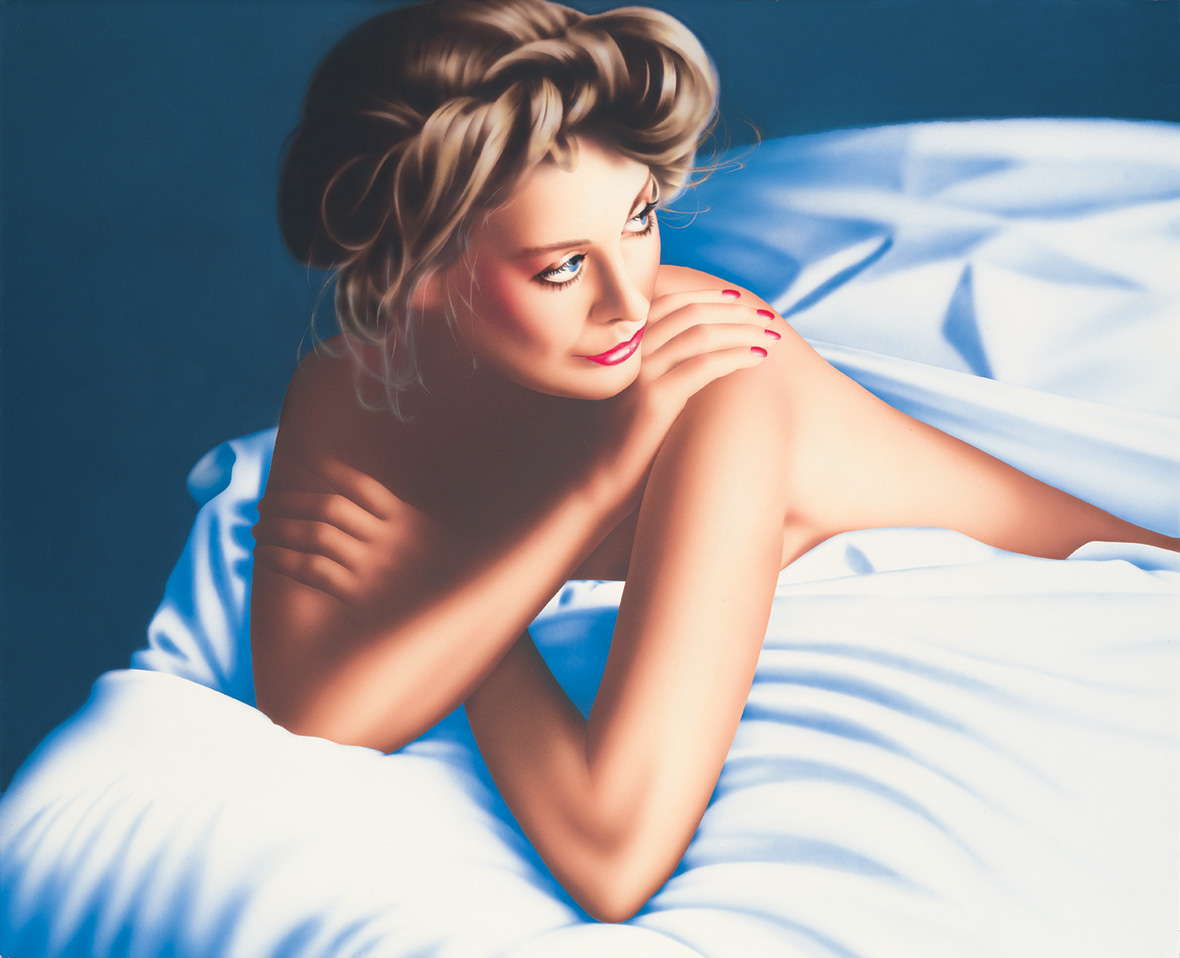
Born in the Shimane Prefecture in 1941, Yamaguchi grew up in post-war Japan, witnessing a moment of political and economic reconstruction. “After the war, the adults changed the educational system enormously. Freedom became the most precious substance in the postwar educational reform. My behavior was born naturally. I was free to create,” she says.
Graduating from the Tokyo University of the Arts, Yamaguchi was a pioneer in using airbrush painting in Japan, making it popular through her posters and adverts. It’s a technique based on air pressure, in which the painter sprays liquid paint into a surface, leaving no visible streaks or strokes. It allows outstanding shades and smooth transitions of colors and a realistic result. To delineate the shapes, the artist uses stencils and applies the last details and touches freehand.
山口晴美出生于 1941 年的岛根县,经历过战后的日本,目睹了政治和经济的重建过程。“战争结束后,人们对教育体系进行改革。追求自由成为战后教育改革中最重要的事情。我的创作理念也是自然形成的,我可以自由地创作。”她说道。
从东京艺术大学毕业后,山口成为日本最早一批使用喷枪创作的人,并通过她的海报和广告作品,使喷枪画流行开来。使用喷枪画创作时,需要利用空气压力,将颜料喷射到画布上,这种媒介在作画时不会留下一笔一划的痕迹,可以更好地呈现不同色调,实现色彩的平滑过渡,形成写实的绘画风格。艺术家在描绘轮廓时,需要使用模版,再徒手补充最后的细节。
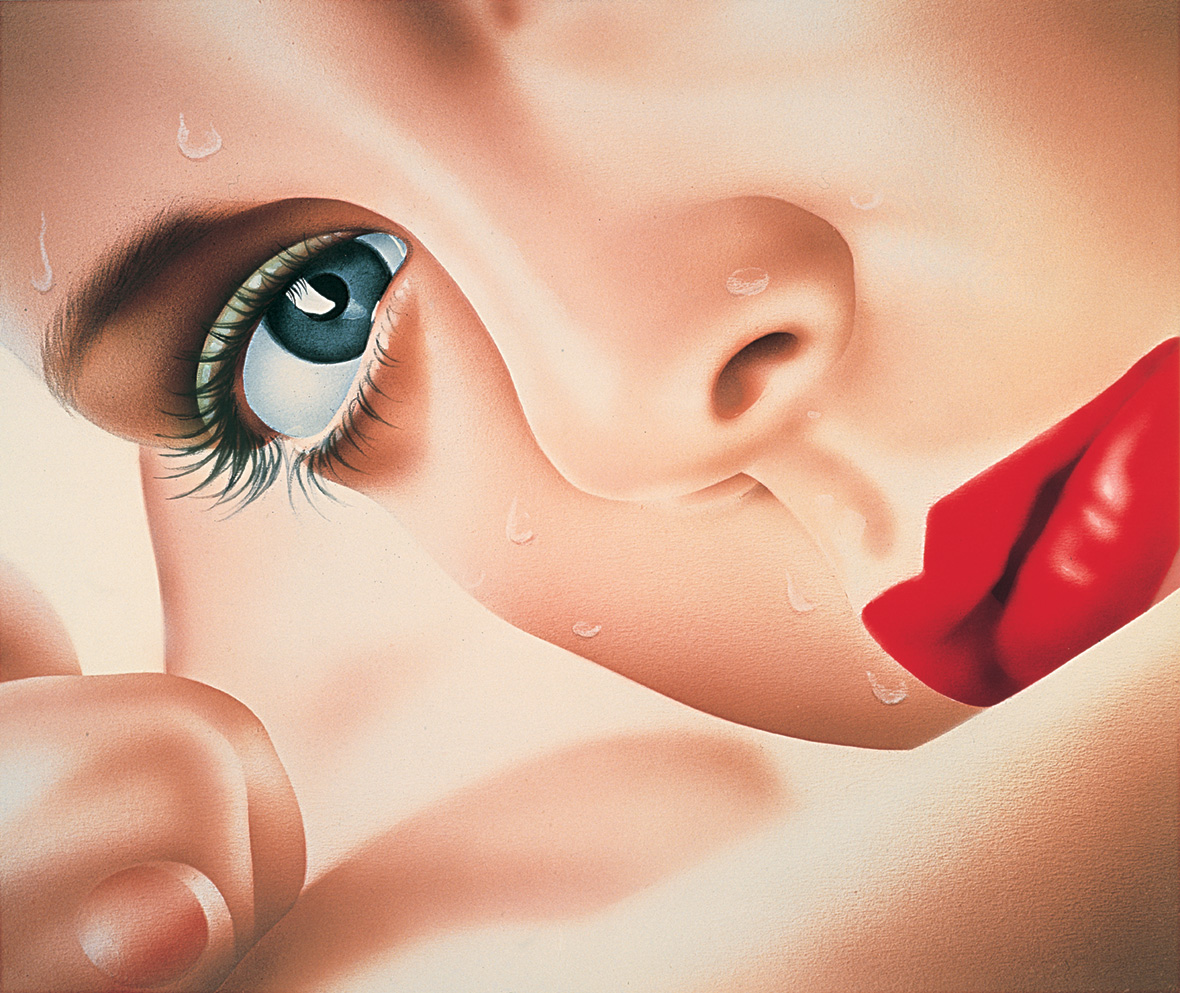
In the advertising world, it is not uncommon to see pictures of well-kept and beautiful women. Still, they’re often represented as loving family members, cleaning and preparing for the household or are sexualized to attract the male gaze. The Harumi Gals are unique. Their eye contact and expression seem standoffish towards this male gaze as if stating that, with them, women are the ones observing, and not the other way around.
在广告世界里,身材姣好的美女很常见。然而,大多数时候,这些女性要么以顾家的形象出现,在清洁和做家务;要么一身性感打分,以此来吸引男性。但 Harumi Gals 却不一样。她们目光冷淡,似乎对男性的凝视毫不在意,令人感觉像是她们在凝视男性,而不是男性在凝视她们。
Advertisements have a strong capacity to change individual perspectives and affect society. Images can stir up emotions and change the status quo, consciously or unconsciously. The Harumi Gals contributed to changes in the Japanese mindset in the late 20th century, empowering women to aspire for liberation. Still today, they’re relevant. Not just Japan, but the entire world still needs their confidence and fierceness. “Even though we think we reached equality, there are countless situations where women are not in the same ballpark as men. We should continue to aim for true gender equality,” Yamaguchi says.
广告能改变人们的观点,影响整个社会;而图像能在自觉或不自觉间,激发人们的情绪,改变社会现状。Harumi Gals 的出现,影响了 20 世纪后期日本人们的想法,鼓励更多女性解放自我。直到今天,她们仍然在发挥着影响。不只是日本,整个世界都依然需要她们的自信与无畏。“虽然有人认为我们已经实现两性平等,但在很多时候,女性与男性的地位仍然是不平等的。我们应该继续争取真正的性别平等。”山口晴美说道。
Like our stories? Follow us on Facebook and Instagram.
Instagram: @harumigals
Contributors: Tomas Pinheiro, Lucas Tinoco
Chinese Translation: Olivia Li
Images Courtesy of NANZUKA



